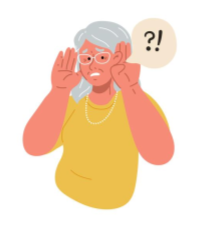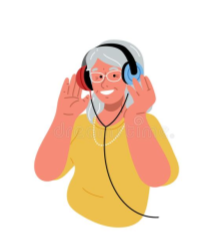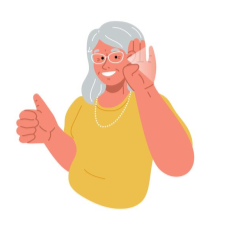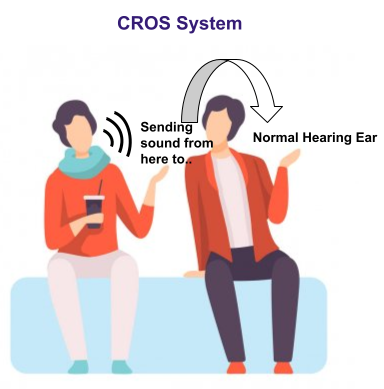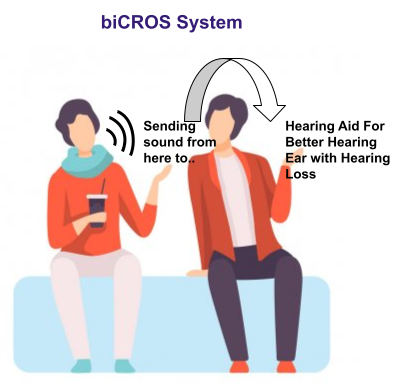Sudden Sensorineural Hearing Loss (SSHL)
Sudden Sensorineural Hearing Loss (SSHL), is an unexplained, rapid loss of hearing either all at once or over a few days. SSHL typically occurs due to underlying issues with the sensory organs of the inner ear. People with SSHL can discover the hearing loss upon waking up in the morning, when they try to use the ear (use a phone), and/or notice an alarming "pop" just before their hearing changes.
People with SSHL may also notice one or more of these symptoms:
- Ear fullness | Pressure
- Dizziness | Vertigo | Disequilibrium
- Tinnitus - Ringing/Roaring/Buzzing in their ear(s) tinnitus
- Distorted Sound Quality to Hearing (broken speaker)
- Hyperacusis (Heightened Sensitivity to Sound)
Some Statistics on SSHL
- 9 out of 10 SSHL patients experience hearing loss in only one ear (rarely both ears)
- Only 15% of patients have SSHL traced to a specific cause
- TIMELY TREATMENT greatly increases the chance that at least some hearing will recover (WITHIN 24 hours of onset)
- Affects 5 TO 30 PEOPLE PER 100,000 every year (actual number of new cases each year could be much higher because it often goes undiagnosed)
- SSHL can happen at any age, but most often affects adults in their LATE 40S & EARLY 50S.
- People often put off seeing a doctor because they think their hearing loss is due to allergies, a sinus infection, earwax, swimmer's ear, and/or ear infection
What can cause SSHL?
A variety of disorders affecting the ear can cause SSHL. Most of these causes are accompanied by other medical conditions or symptoms that point to the correct diagnosis.
Some of these conditions include:
- Infections
- Head Trauma (See our Concussion/TBI Blog post for more Information)
- Autoimmune diseases
- Exposure to certain drugs that treat cancer or severe infections
- Blood circulation problems
- Neurological disorders (such as multiple sclerosis)
- Disorders of the inner ear such as Meniere's disease
- Noise Exposure
Diagnosis
If you have experienced these symptoms, your primary care / emergency doctor should rule out hearing loss due to an obstruction in the ear, like fluid or wax.
For SUDDEN ONSET hearing loss, tinnitus, and/or dizziness/vertigo without an obvious, identifiable cause, referral to an Audiologist & Otolaryngologist within 24-48 hours is strongly advised.
Your Audiologist & Otolaryngologist will perform a comprehensive hearing evaluation, review results, possible causes, and medical management options with you.
Your doctors will likely order additional tests to try to determine an underlying cause. These tests may include blood tests, imaging (usually MRI), and balance tests (if experiencing dizziness)
Treatment
The most common treatment for SSHL, especially when the cause is unknown, is corticosteroids. Steroids can treat many disorders and help by reducing inflammation/swelling, and helping the body fight illness (pill form & injections). In some cases hyperbaric (pronounced hi-per-bar-ik) oxygen therapy (HBOT) can be recommended alongside a steroid course.
Steroids have been proven to provide the highest chance for the reversal or reduction of permanent hearing loss prior to two-four weeks from onset. They are often recommended even before all test results come back.
Additional treatments may be needed if your doctor discovers an underlying cause of your SSHL…
| IF | THEN |
| Caused by an infection… | the doctor may prescribe antibiotics |
| Taking drugs that were toxic to the ear… | different prescriptions changes may be recommended |
| Caused by an autoimmune disorder… | different medications, dietary restrictions, testing, and referral to immunologist may be advised |
Rehabilitation
If your hearing loss is severe, does not respond to treatment, and/or happens in both ears, your doctor may recommend hearing aid(s), CROS/BiCROS systems, Bone Anchored Hearing Aid(s), or even Cochlear Implant(s) as a rehabilitative option.
These recommendations are made on a highly individualized basis and it is important that you have a hearing aid evaluation to determine what rehabilitative options are most appropriate for you based on your individual hearing loss, tinnitus severity, listening goals, and day to day life/communication.
Hearing Aid(s)
Hearing Aid (s) can be a great rehabilitative option for patients depending on the remaining hearing loss/usable hearing following treatment. Hearing aids can provide patients increased access to sound in order to improve speech understanding.
For certain patients hearing aids can also provide alleviation in tinnitus symptoms through sound therapy / masking / and providing access to sound enriched environments. (See our Tinnitus Management Blog for more Information)
CROS & BiCROS Solutions (Contra-lateral Routing Of Signal)
Can be a great rehabilitation option for patients with single sided deafness/little usable hearing in one ear even following medical management/treatments.
Traditional hearing aids send sound into the ear they are sitting on. CROS/BiCROS systems route sound differently. These can be great alternatives to people who aren't traditional candidates for hearing aids in their SSHL ear and/or not ready/candidates for surgical interventions.
This gives the individual 360 degrees of awareness instead of the 180 degrees received from only one ear. CROS/BiCROS systems do not improve localization abilities since all the sound and speech are only heard in the better ear.
CROS systems
Are for individuals with one NORMAL hearing ear and one ear with minimal usable hearing. The device on the non-hearing ear looks like a traditional hearing aid, but it is really a microphone and transmits the sound to the better hearing ear.
BiCROS systems
Are for individuals with one ear with milder and aidable hearing loss and one ear with minimal usable hearing. This system benefits the patient by treating their milder hearing loss ear with a hearing aid while also sending information from the device on their non-hearing ear to their better hearing ear.
Bone Anchored Hearing Aid(s) (BAHA)
A bone-anchored hearing aid (BAHA) is a device worn behind the poor ear. This device can be worn with a headband-like accessory or it can be surgically implanted. BAHAs transmit sound vibration directly to the inner ear of the better hearing ear using bone conduction.
Some prefer a BAHA because they would rather wear one device than two if they have normal hearing in their better ear. For those with a history of ear infections, pathology, or drainage, keeping the ear canal clear through the use of a BAHA is beneficial.
Like the CROS/BiCROS system, it provides 360 degrees of awareness but does not improve localization abilities.
Cochlear Implant(s)
Cochlear Implant (s) (CI) is a surgical option that bypasses damaged portions of the ear to deliver sound signals to the hearing (auditory) nerve. The CI consists of a sound processor that sits behind the ear and a surgically implanted receiver and electrode system that sends electrical currents into the inner ear. A magnet that sits behind and above the poorer hearing ear holds the two parts together.
A CI results in a 360-degree awareness, but also improves speech comprehension in noisy environments.
The First Step
If you or a loved one are having concerns about sudden hearing loss and/or tinnitus (no matter the severity), our offices are readily available to provide an evaluation, consultation, and treatment recommendation best suited for you. The first step is reaching out!



